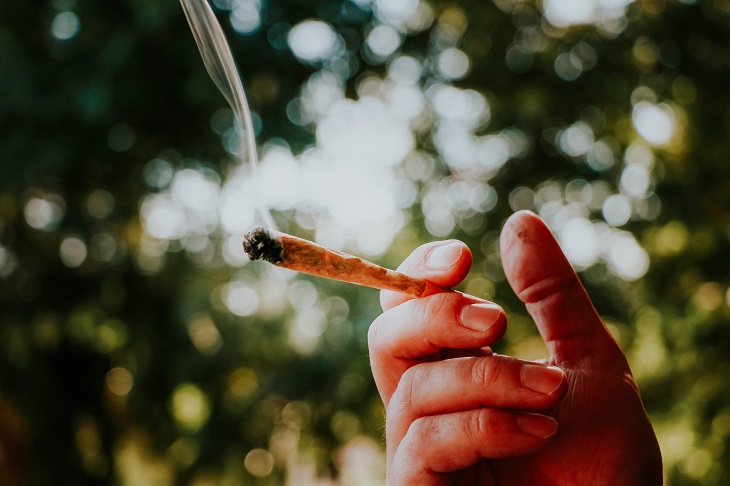Since the onset of the COVID-19 pandemic in the early months of 2020, many people have been affected by the disease. Roughly 103 million people have contracted the virus at the time of writing, with over two million of those people losing their lives to the disease. With the pandemic still in full effect across the globe, the worry of contracting the virus and experiencing severe complications is still at the top of everyone’s minds.
For those who take medical marijuana to help them cope with complications of chronic disease, that worry may be heightened, especially if the chosen method of ingestion is through smoking. But what effect does smoking medical marijuana have on COVID-19? And are those who take medical marijuana more at risk?
How is COVID-19 mainly transmitted?
There are many ways that the COVID-19 virus can be transmitted from person to person. The biggest transmission risk is through droplets in the air. When a person coughs, sneezes, sings, shouts, or talks, respiratory droplets are pushed out into the air. If someone breathes in infected droplets, they too now have the virus inside their body.
The droplets range in size from small (often referred to as aerosols, which can linger in the air) to large (which fall to the ground rapidly). This leads the assumption that larger droplets are less of a threat than smaller ones. Coughing can produce both large and small droplets, depending on their origin. If the droplets are produced in the larynx and then coughed into the air, they are likely smaller droplets, whereas droplets from the oral cavity while coughing will typically be larger.

Are smokers more vulnerable to contracting COVID-19?
According to the World Health Organization, smokers may be more vulnerable to contracting the virus, but not because of the effects that smoking has on the body. Smokers are likely more vulnerable because the act of smoking involves putting something to your mouth using your hands, which may be contaminated. This hand-to-mouth motion increases the likelihood of transmission of the virus.
Many people often smoke in social situations as well, which can lead to increased risk of transmission if sharing is occurring. For those who smoke medical marijuana, that social aspect is generally eliminated, and thus the risk of transmission is lower than those who smoke cigarettes or recreational marijuana.
How could smoking affect COVID-19?
Since smoking medical marijuana increases the risk of respiratory infection and complications, it could lead to worse outcomes if someone were to catch the virus. The smoking of cannabis can damage the lungs, and since COVID-19 is a lung infection, this can lead to more severe symptoms. Some research has also suggested that THC may have the ability to alter the efficacy of the immune system, which could make it harder for someone to fight off a COVID-19 infection.
However, other studies have found contradictory results when it comes to cannabis and immunosuppression. Other research has also found that the use of CBD can actually reduce complications and severe symptoms in those with COVID-19. The information is not conclusive, though, and more studies are needed to determine the accuracy of the study’s findings. It also wasn’t clear in the study whether CBD was taken via smoking.
Alternate MMJ dosing methods
The use of medical marijuana via smoking may be some patients’ first choice of ingestion method. But due to the repercussions it can have on lung health, and taking into consideration the COVID-19 pandemic, some may wish to change out how they ingest MMJ. The good news is that there are plenty of dosing methods available for those who require medical marijuana to deal with their chronic conditions.
The first alternative that’s most like smoking is vaporizing. The process is similar, but using a vaporizer involves the inhalation of vapor instead of smoke. It’s not clear whether or not vapor is a healthy alternative to smoking in this instance, though.

Methods that don’t include any inhalation, which may be good options for those wishing to change their dosing method, include eating MMJ, topical application, or oils. Edible medical marijuana can be ingested through various types of foods such as gummy candies or baked goods. Topical marijuana provides the dose by applying it to the skin, and oils are ingested by placing the appropriate dose under the tongue until it dissolves in the mouth.
Each method will come with different wait times to feel its effects. For example, someone who smokes medical marijuana will likely feel the effects minutes following ingestion, whereas an edible dose can take up to two hours.
During the COVID-19 pandemic, many people may wish to do everything they can for their health to ensure that if they do contract the virus, they have a fighting chance of a full recovery. For those who take medical marijuana, this means staying the course in your treatment and opting for a different dosing method if you are worried about the risks that smoking may cause.
Featured image by Elsa Olofsson on Unsplash
